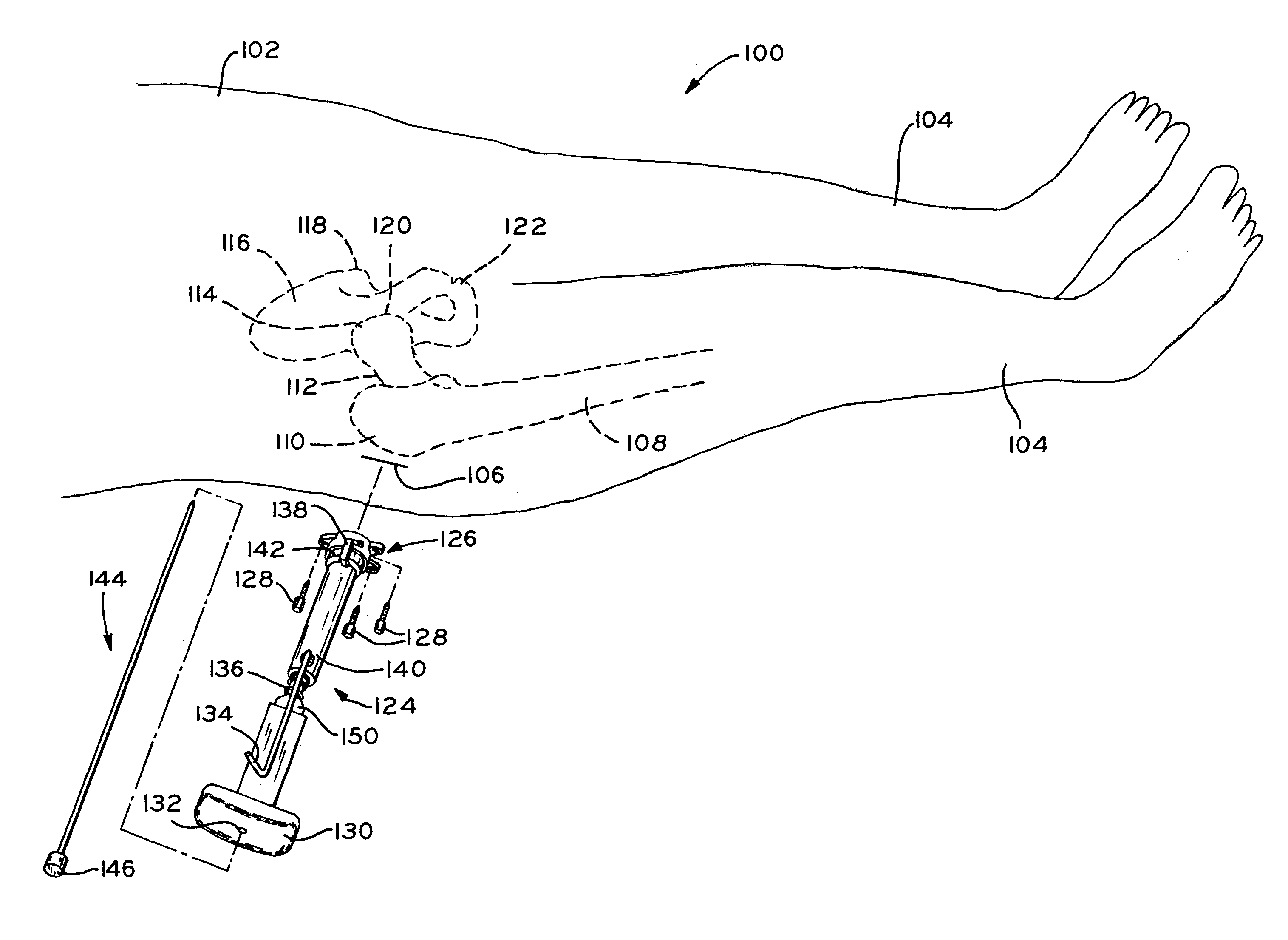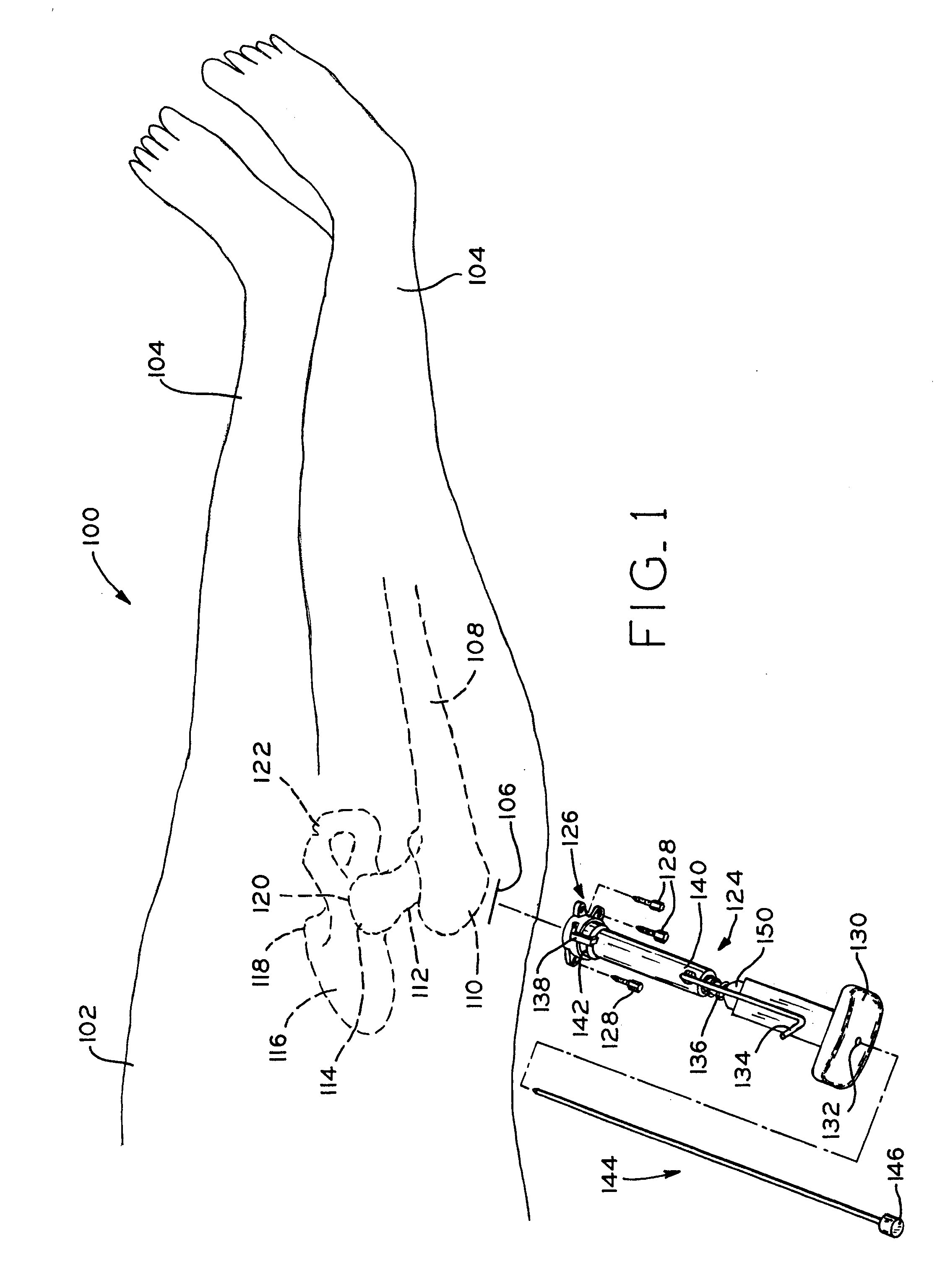Method and apparatus for reducing femoral fractures
a technology of femoral fractures and methods, applied in the field of hip fracture treatment methods and equipment, can solve problems such as lengthening the rehabilitation time of patients, and achieve the effect of accelerating patient recovery
- Summary
- Abstract
- Description
- Claims
- Application Information
AI Technical Summary
Benefits of technology
Problems solved by technology
Method used
Image
Examples
Embodiment Construction
[0127] Implant 260 illustrated in FIG. 41 is utilized to reduce a femoral fracture utilizing a method of implantation which does not require incision of the quadriceps. As illustrated in FIG. 1, incision 106 is aligned with greater trochanter 110, with femur 108 being prepared to receive implant 260 through incision 106. As described above, greater trochanter 110 is not covered with muscle and therefore, incision 106 can be developed to expose greater trochanter 110 without requiring the incision of muscle. Incision 106 measures about 2.5 centimeters (1 inch). FIGS. 6-10 illustrate use of various novel reamers of the present invention to form femoral cavity 224 (FIG. 11). Various instruments described below may be utilized in lieu of or in conjunction with the instruments illustrated in FIGS. 6-10. As illustrated in FIG. 12, implant 260 (further illustrated in FIGS. 41-43) is inserted into femoral cavity 224 via access 101 (FIGS. 13 and 14) formed through greater trochanter 110. As ...
PUM
 Login to View More
Login to View More Abstract
Description
Claims
Application Information
 Login to View More
Login to View More - R&D
- Intellectual Property
- Life Sciences
- Materials
- Tech Scout
- Unparalleled Data Quality
- Higher Quality Content
- 60% Fewer Hallucinations
Browse by: Latest US Patents, China's latest patents, Technical Efficacy Thesaurus, Application Domain, Technology Topic, Popular Technical Reports.
© 2025 PatSnap. All rights reserved.Legal|Privacy policy|Modern Slavery Act Transparency Statement|Sitemap|About US| Contact US: help@patsnap.com



